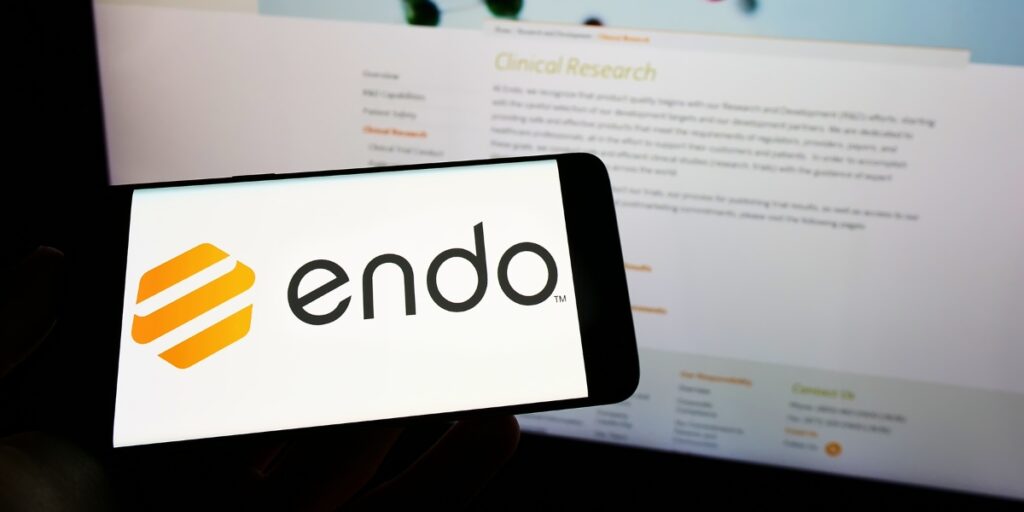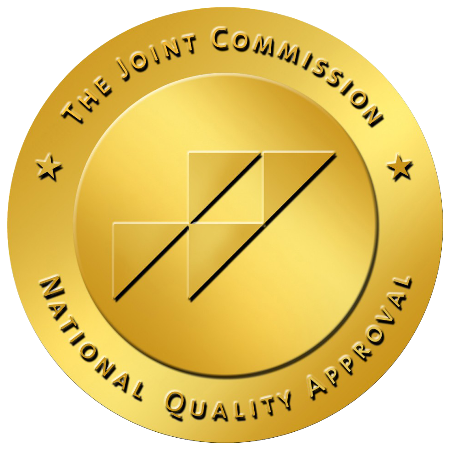Opana (Oxymorphone) Abuse, Addiction, and Treatment

Shortly after being released, Opana, the brand name for oxymorphone, caused startling high rates of Opana addiction, abuse, and patients seeking addiction treatment for their dependence.
Developed as an end-of-life palliative care drug, Opana (oxymorphone) was released to treat chronic, severe pain for people already tolerant to other opioid pain relief options. Opana was so highly addictive that developing an opioid use disorder was almost unavoidable with a few weeks of use.
What Is Opana (Oxymorphone)?
Opana was the brand name for oxymorphone, a potent opioid painkiller for patients with severe pain requiring around-the-clock treatment that didn’t respond to other pain medications.
As an opioid analgesic, oxymorphone binds to selective opioid receptors to reduce pain signals, change how the body responds to them, and create euphoric feelings and relaxation.
One of the main attributes that make oxymorphone dangerous and addictive is that it does not have a “ceiling dose” when the painkilling effects stop working. Other medications stop being effective at a specific dose, but oxymorphone’s effectiveness continues to increase with the amount taken. This aspect can increase the risk of overdose and life-threatening breathing problems more than other opioid prescription drugs.
As a name brand, Opana has been obsolete and unavailable since 2017. Generic oxymorphone is available in immediate-release and extended-release tablets, liquid, or suppository forms. Oxymorphone is highly addictive and potent, with experts placing it just below fentanyl and more dangerous than oxycodone.
Opana: An Opioid Epidemic
Opana’s role in the opioid epidemic is a perfect example of how dangerous addictive prescription drugs can be and the part they play in the public health crisis of addiction.
There are many contributing factors to the opioid epidemic in the United States. Experts break them into three general components—pain, pharmaceutical companies, and the illegal drug market.
The Centers for Disease Control and Prevention (CDC) estimates that 20%, or 1 in 5 adults, suffers from chronic pain. Opioid painkillers are the most effective for treating acute and long-term pain; however, they are highly addictive and some of the most misused and abused prescription drugs worldwide.
Patients who rely on pain relievers to function in their daily lives develop a physical dependence on their medications and build a tolerance, eventually causing the medicine to be less effective for them. When this happens, patients either begin to abuse their drugs by taking higher doses or mixing them with other substances, or they consult with their doctors to switch to a stronger prescription of the same or different medicine.
To keep up with the demand for effective pain relief, pharmaceutical companies constantly compete to produce miracle drugs. Unfortunately, in their rush for a competitive edge, they often overstate their products’ safety and push them through aggressive marketing strategies.
Endo Pharmaceuticals, the manufacturer of Opana, released it in the United States in 2006 as an option for people unresponsive or tolerant to other pain relief medications. Many people decided to switch to Opana, hoping it would relieve their pain. From 2006 to 2011, Endo Pharmaceutical’s sales increased from $7 million to $384 million. However, in those same five years, reports of Opana abuse and addiction grew, and opioid deaths increased dramatically. Endo reformulated Opana as an extended-release tablet, Opana XR, in 2016.
The Food and Drug Administration (FDA) determined that the reformulated pill was still easy for people to abuse by crushing and snorting it or dissolving it with water to inject. In 2017, the FDA publically called for Opana’s removal from the market. They released the following statement: “The abuse and manipulation of reformulated Opana ER by injection have resulted in a serious disease outbreak. When we determined that the product had dangerous unintended consequences, we decided to request its withdrawal from the market.”
After voluntarily pulling Opana as a name brand, Endo sold the generic oxymorphone formula to Impax Pharmaceuticals for an undisclosed portion of their profits. Both companies are currently facing lawsuits from the Federal Trade Commission (FTC) for creating a monopoly. Oxymorphone is still widely available, and the FDA declined to impose safeguard measures, meaning it is still highly addictive and easy to abuse.
Unfortunately, many patients who suddenly lose access to safe and legal medication turn to the illegal drug market to secure the same pills or resort to using opioids like heroin, fentanyl, or whatever they can to self-medicate and avoid withdrawal symptoms.
Patients with a history of illegal opioid abuse are less likely to receive pain medications if they return to a practicing doctor, forcing them to perpetuate the drug addiction cycle. The National Survey on Drug Use and Health (NSDUH) reports that almost 19 million people misuse prescription drugs like oxymorphone annually in the United States, and nearly 75% of overdose deaths involve opioids.

Side Effects
Oxymorphone side effects vary, but the more potent a drug is, the more intense the side effects can be. Opana is for pain management in people with severe, unrelenting pain that other medications no longer help, meaning it’s very potent, and the side effects can be too.
Oxymorphone side effects include:
- Dry mouth
- Stomach pain and swelling
- Gas
- Nausea
- Vomiting
- Extreme drowsiness
- Dizziness
- Flushing
- Itching
- Red eyes
- Rashes
- Fast heartbeat
- Excessive sweating
- Headache
- Confusion
- Anxiety
- Respiratory depression
- Fainting
If a doctor prescribes oxymorphone, you should ask them about potential interactions and warnings and what to do if side effects become unbearable. Short-term side effects of oxymorphone usually resolve as the body adjusts to the medication, but if they remain persistent or become overwhelming, you should immediately seek medical attention
Long-Term Side Effects
Repeated use of oxymorphone causes long-term physical and psychological side effects and damage. Abusing oxymorphone by snorting or injecting it causes additional life-threatening side effects.
Long-term side effects of oxymorphone abuse include:
- Muscle stiffness
- Twitching
- Severe bloating
- New or worsening mental illness symptoms
- Agitation
- Hallucinations
- Swollen extremities
- Low blood pressure
- Weakened immune system
- Liver damage
- Kidney damage
- Irregular menstruation
- Impotence
- Infertility
- Red, itchy skin bumps
- Weight loss
- Vertigo
- Tolerance
- Stroke
- Seizures
- Brain Damage
Injecting oxymorphone is linked to a rare blood disease called thrombotic thrombocytopenic purpura (TTP). TTP causes blood clots to form throughout the body. Left undiagnosed or untreated, TTP leads to internal bleeding or restricted blood flow to vital organs and the brain, resulting in permanent damage and death. Injection drug abuse increases the risk of HIV and Hepatitis C infections and other complications from sharing needles.

Signs of Oxymorphone Addiction
The signs of oxymorphone addiction are similar to addiction to other opioids. Because oxymorphone is for patients who’ve become tolerant to less potent painkillers, many people are already dependent and possibly addicted to opioids and displaying signs of a substance use disorder.
Oxymorphone has high abuse potential, which can cause dependence to turn into a full-blown substance use disorder or escalate an already existing one. Oxymorphone addiction causes behavioral, physical, and psychological changes.
Signs of oxymorphone addiction include:
- Slow reflexes
- Loss of coordination
- Memory loss
- Difficulty focusing
- Mood swings
- Risky sexual behavior
- Bloody noses
- Needle marks
- Running out of their prescription early
- Visiting multiple doctors to get more oxymorphone
- Taking medicine from friends and family members
- Buying drugs off the street
- Drug cravings between doses
- Neglecting responsibilities
- Poor hygiene
- Lack of critical thinking
- Making irrational or dangerous choices
- Inability to stop taking oxymorphone despite negative consequences
- Withdrawal symptoms when they don’t take oxymorphone
Oxymorphone Withdrawal Symptoms
The severity of oxymorphone withdrawal symptoms will vary for everyone. Quitting oxymorphone cold turkey or tapering off it too quickly can cause withdrawal symptoms ranging from highly uncomfortable to life-threatening.
Factors that influence the length and intensity of Opana withdrawal include the history of substance abuse, physical and psychological co-occurring disorders, the ingestion method, and the amount of oxymorphone regularly taken.
Oxymorphone withdrawal symptoms include:
- Restlessness
- Runny nose
- Watery eyes
- Fatigue
- Chills
- Sweating
- Muscle and bone pain
- Abdominal cramping
- Back pain
- Excessive yawning
- High blood pressure
- Increased heart rate
- Anxiety
- Nausea
- Vomiting
- Diarrhea
- Drug cravings
- Irritability
- Suicidal thoughts
If you want to stop taking oxymorphone, you should consult a doctor, devise a plan to taper your doses, or enter a medical detox program to ensure your health and safety.

Evidence-Based Substance Abuse Treatment
Opioid addiction can be devastating and isolating, but you are not alone if you struggle with substance abuse; a better life is possible.
At Northridge Addiction Treatment Center, we understand the complexity of overcoming addiction and take every detail into account to ensure your comfort, safety, and long-term success.
We provide onsite medical detox to help you conquer withdrawal, followed by evidence-based treatment that addresses the roots of addiction and equips you with the knowledge and confidence to overcome any future challenges to your recovery.
Reach out to us now. Our compassionate treatment specialists are eager to help you get the treatment and care you need.
Find Meaningful Recovery
Our caring and compassionate specialists are eager to help you comfortably navigate this journey to recovery. Our individualized treatment plan, programs, and therapies may be a perfect match for you or your loved one. Let us assist you in living the happy life you deserve. It starts with a phone call.




